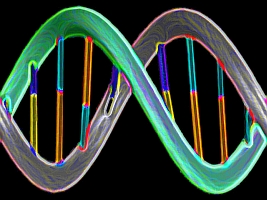Researchers in Sweden and the U.S. have devised a process for in-depth genomic sequencing of single cells, which can lead to a better understanding of malignant tumors. The team from the Ludwig Institute for Cancer Research, the Karolinska Institutet in Sweden, the University of California in San Diego, and Illumina Inc. in Hayward, California published its findings online in yesterday’s issue of the journal Nature Biotechnology (paid subscription required).
Previous research indicated one gene can give rise to several forms of the same protein through different cut-and-paste configurations of its raw copy. This phenomenon means that cells in the same tissue are not necessarily homogenous, and may require a more complete and deeper analysis than originally thought.
In the study, the research team developed a technique called Smart-Seq that provides a complete mapping of the gene expression of individual cells. The scientists studied tumor cells in the blood system of a patient with recurring malignant melanoma. The team first identified the tumor cells in a regular blood test, then used Smart-Seq to analyze the individual cells’ gene expression.
This method enabled the researchers to show that the tumor cells had activated many important membrane proteins considered responsible for the ability of these cells to evade the body’s monitoring system and spread in the patient’s body. For cancer research or diagnosis this capability is considered important, since many key cells of this kind exist only in small numbers and require this type of single cell analysis.
In the study, staff from Illumina Inc. developed protocols, created libraries, and conducted the primary data analysis. Illumnia is a developer genomic sequencing systems.
Rickard Sandberg, a molecular biologist at the Ludwig Institute and principal investigator at Karolinska Institutet, says “Cancer researchers around the world will now be able to analyze these cells more systematically to enable them to produce better methods of diagnosis and therapy in the future.”
Read more:
- DNA Sequencing Extended to Cancer Treatment Decisions
- Novartis, Broad Institute Partner on Cancer Genome Database
- Whole Genome Sequencing Advances for Cancer Diagnosis
- Software to Aid Genome Analysis for Cancer Therapies
* * *


 RSS - Posts
RSS - Posts
You must be logged in to post a comment.